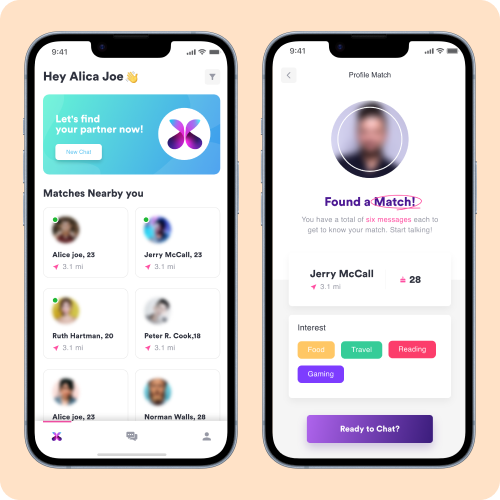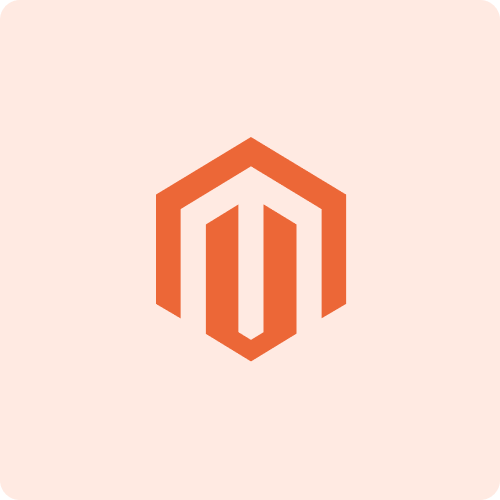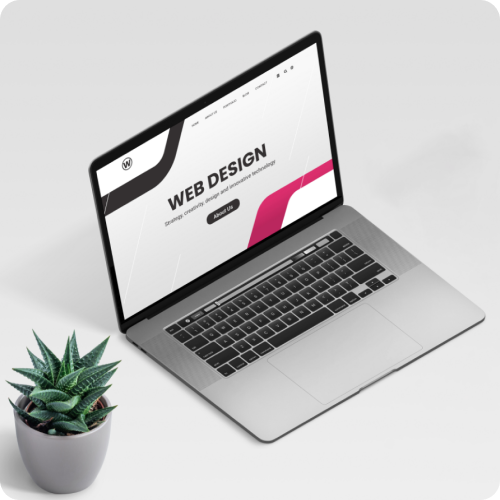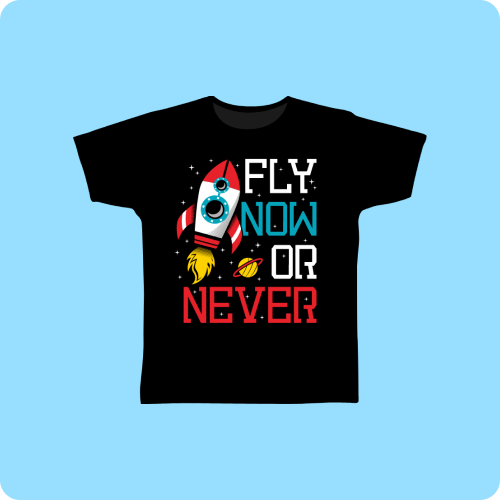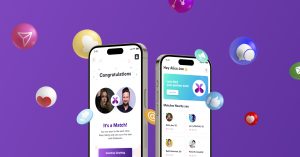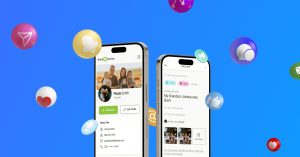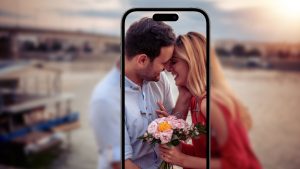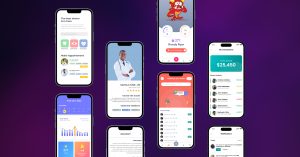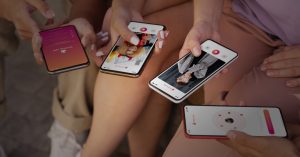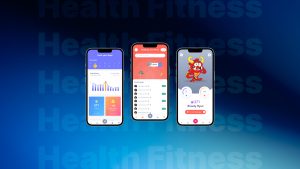Dating Mobile App Development- In today’s digital age, finding love has become as simple as swiping right. With millions of users turning to dating apps to make connections, the competition among these platforms is fierce. But what truly sets a successful dating app apart from the rest? The answer lies in exceptional UX/UI design. The importance of UX/UI design in mobile dating app development goes beyond just aesthetics; it’s about creating an experience that is intuitive, engaging, and keeps users coming back for more. Imagine an app that not only looks stunning but also understands your needs, guiding you effortlessly through your journey to find that perfect match.
In this blog, we will discover why UX/UI design is the secret ingredient to any thriving dating app.
Understanding UX/UI Design in Dating Mobile App Development
When it comes to dating mobile app development, the importance of UX/UI design cannot be overstated. UX, or User Experience, focuses on the overall feel of the app and how easily users can navigate through it. A seamless user experience ensures that users can effortlessly find matches, communicate, and engage with various features without frustration. On the other hand, UI, or User Interface, deals with the visual aspects of the app, such as the layout, color schemes, typography, and interactive elements. An attractive and intuitive UI design captures the user’s attention and makes the app aesthetically pleasing.
For a dating app, the primary goal is to connect people, and the success of this connection largely depends on how user-friendly and visually appealing the app is. A well-designed UX ensures that users have a smooth and enjoyable journey from signing up to finding a match. It involves understanding user behavior, preferences, and pain points to create an app that feels personalized and engaging. For instance, features like easy profile creation, efficient search filters, and intuitive swipe functionalities contribute to a positive user experience.
UI design, on the other hand, plays a crucial role in making the app visually compelling. The use of consistent color palettes, modern typography, and interactive animations can significantly enhance the app’s appeal. An aesthetically pleasing interface not only attracts users but also keeps them engaged. For instance, incorporating visual cues like icons and buttons that are easy to understand and interact with can make the app more user-friendly.
The Role of UX/UI Design in Dating Mobile App Development
At its core, UX/UI design is about creating an experience that is not only functional but also delightful for users. A well-crafted user experience (UX) ensures that users can navigate the app effortlessly, from setting up their profiles to finding potential matches and communicating with them. This seamless experience is critical in retaining users and encouraging them to return to the app regularly.
User Interface (UI) design complements this by focusing on the app’s visual elements, ensuring that every screen looks appealing and is easy to interact with. In a dating app, first impressions matter immensely. An intuitive and attractive UI can captivate users from the moment they open the app, making them more likely to explore its features. For example, clear icons, consistent color schemes, and visually engaging profiles contribute to a positive first impression and encourage continued use.
Effective UX/UI design in dating mobile app development also plays a significant role in user engagement. Features like swipe gestures for liking or rejecting profiles, easy access to messaging, and intuitive navigation through the app enhance the overall user experience. These elements make the app enjoyable to use, reducing the learning curve and minimizing frustration. A dating mobile app development company that prioritizes UX/UI design will focus on understanding user behavior and preferences, ensuring that every interaction feels natural and satisfying.
Moreover, good UX/UI design builds trust and credibility. In the dating app industry, where users share personal information and seek meaningful connections, trust is crucial. A polished, professional design conveys reliability and security, making users feel more comfortable and confident in using the app. This trust can lead to higher user retention rates and positive word-of-mouth recommendations.
By investing in top-notch UX/UI design, a mobile dating app development company can create an app that stands out in a crowded market and offers a superior user experience.

Key Elements of Effective UX/UI Design in Dating Mobile App Development
Creating a successful dating app requires meticulous attention to UX/UI design. The key elements of effective UX/UI design for dating apps focus on enhancing usability, ensuring an engaging user experience, and making a strong visual impact. Let’s dive into these essential components:
Intuitive Navigation and Clean Layout An intuitive navigation system is paramount in dating app design. Users should be able to move seamlessly from one feature to another without confusion. This involves creating a clean and organized layout where important functions like profile creation, browsing, and messaging are easily accessible. An intuitive layout reduces the learning curve, allowing users to focus on connecting with others rather than figuring out how the app works.
Personalized User Experience Personalization is a cornerstone of effective UX design in dating apps. This involves leveraging data to tailor the user experience to individual preferences and behaviors. Features like customized match suggestions, location-based filters, and personalized notifications enhance user engagement by making the app feel uniquely suited to each user. A personalized experience keeps users coming back, as they feel the app understands and caters to their needs.
Attractive and Consistent Visual Elements Aesthetically pleasing design elements are crucial for keeping users engaged. Consistency in color schemes, fonts, and iconography helps in creating a cohesive and professional look. Visual elements should not only be attractive but also functional, guiding users intuitively through the app. For instance, using familiar icons for actions like liking, messaging, and profile viewing helps users understand functionality at a glance.
Responsive Design for Various Devices Dating apps must perform well across different devices and screen sizes. A responsive design ensures that the app looks and functions optimally whether accessed on a smartphone, tablet, or desktop. This flexibility enhances accessibility, allowing users to engage with the app in various contexts, whether they are at home or on the go.
Fast Loading Times and Smooth Performance In the competitive world of dating apps, performance issues can be a deal-breaker. Ensuring fast loading times and smooth transitions between screens is essential. Users are likely to abandon an app that is slow or frequently crashes. Therefore, optimizing the app’s performance to handle large volumes of data and high traffic seamlessly is a key aspect of UX/UI design.
Engaging Onboarding Process First impressions are critical in dating apps. An engaging and straightforward onboarding process helps in retaining new users. This involves creating a welcoming introduction to the app, clearly explaining how to use key features, and making it easy to set up a profile. The onboarding process should be designed to minimize effort while maximizing user understanding and engagement.
Interactive and Engaging Features Incorporating interactive features such as swiping, animations, and gamified elements can make the user experience more engaging. These features add a fun and dynamic aspect to the app, encouraging users to spend more time exploring and interacting with potential matches.
Case Studies: Successful Dating Apps with Great UX/UI
Here are some standout examples of great UI/UX designs in some popular dating apps:
1. Tinder
Tinder revolutionized the dating app landscape with its innovative swipe feature, which is a prime example of intuitive UX design. The simplicity of swiping left to pass and right to like made the user experience engaging and addictive. Tinder’s UI is clean and straightforward, with a focus on large photos and minimal text, making it easy for users to make quick decisions. The app also uses consistent colors and icons, enhancing visual appeal and usability. Tinder’s emphasis on user-friendly design has been a significant factor in its widespread popularity and success.
2. Bumble
Bumble is another dating app that stands out for its thoughtful UX/UI design. Bumble empowers women by giving them the initiative to make the first move, creating a unique user experience. The app’s interface is visually appealing with a vibrant color scheme and clear, consistent typography. Bumble’s use of icons and animations adds a dynamic element to the user experience. The app also integrates various features like Bumble BFF and Bumble Bizz, expanding its utility beyond dating. This multifaceted approach, coupled with excellent design, has made Bumble a favorite among users.
3. Hinge
Hinge markets itself as the dating app designed to be deleted, focusing on meaningful connections rather than casual swiping. Its UX design encourages users to fill out detailed profiles and engage in more in-depth interactions. Hinge’s UI features a clean, modern aesthetic with a focus on user content, like photos and prompts. The app uses thoughtful design elements, such as the ability to like specific parts of a profile, fostering more meaningful engagement. Hinge’s emphasis on quality interactions through well-designed UX/UI has contributed to its strong user retention and satisfaction rates.
4. OkCupid
OkCupid is known for its comprehensive matching algorithm, which relies on user responses to a variety of questions. Its UX design prioritizes user engagement by making the profile creation and questionnaire process enjoyable and insightful. The UI is well-organized, with intuitive navigation and a visually appealing layout that makes it easy for users to explore matches and communicate. OkCupid’s effective use of data to enhance user experience, combined with a polished interface, has solidified its place as a trusted dating app.
5. Coffee Meets Bagel
Coffee Meets Bagel takes a unique approach by providing users with a limited number of matches (bagels) each day, encouraging more thoughtful consideration and interaction. The UX design focuses on quality over quantity, which is reflected in its clean, uncluttered interface. The app uses a soft color palette and simple design elements to create a calming and focused user experience. This distinctive approach, backed by strong UX/UI design, has helped Coffee Meets Bagel build a loyal user base.
These case studies illustrate that successful dating apps prioritize both functionality and aesthetics in their UX/UI design. By focusing on intuitive navigation, engaging interactions, and visually appealing interfaces, these apps have managed to attract and retain millions of users. For any dating mobile app development company, learning from these examples can provide valuable guidance on how to create a standout app in a crowded market.

The Impact of Poor UX/UI Design on Dating Apps
- Decreased User Engagement: Poor UX/UI design in Dating Mobile App Development leads to confusing navigation and frustrating user experiences, causing users to abandon the app quickly and reducing overall engagement.
- Low User Retention Rates: Apps with cluttered interfaces and unintuitive controls struggle to retain users, who are likely to switch to competitors with better-designed experiences.
- Negative User Reviews and Ratings: Frustrated users often leave negative reviews and low ratings, which can significantly harm the app’s reputation and deter potential new users from downloading it.
- Reduced Conversion Rates: Poor design can make it difficult for users to complete essential actions like signing up, creating profiles, or making in-app purchases, leading to lower conversion rates and decreased revenue.
- Increased Customer Support Issues: Users encountering frequent problems due to poor UX/UI are more likely to contact customer support, increasing operational costs and resource allocation for issue resolution.
- Brand Damage: An app that looks unprofessional or outdated reflects poorly on the brand, undermining trust and credibility, which are crucial in the dating app market where users share personal information.
- Higher Bounce Rates: If the initial user experience is subpar, users are likely to leave the app after just a few interactions, resulting in high bounce rates and wasted acquisition efforts.
- User Frustration and Disengagement: Complicated or inconsistent interfaces can frustrate users, leading to disengagement and a negative overall experience that discourages continued use.
- Lost Competitive Edge: In a crowded market, a dating app with poor UX/UI design will struggle to stand out, losing its competitive edge to better-designed alternatives that attract and retain more users.
- Revenue Loss: Ultimately, poor UX/UI design affects the app’s profitability, as users are less likely to engage with and pay for premium features or subscriptions in an app that fails to deliver a smooth, enjoyable experience.
Future Trends in UX/UI Design for Dating Mobile App Development
Keeping up with future trends in UX/UI design is essential for any dating mobile app development company looking to stay ahead of the competition. Here are some emerging trends that are set to shape the future of dating app design:
- Personalization and AI Integration Personalization is becoming increasingly important in enhancing user experience. Future dating apps will leverage artificial intelligence (AI) to provide highly personalized experiences. This includes smarter matchmaking algorithms that consider users’ behaviors, preferences, and interactions to suggest more compatible matches. AI can also personalize the UI by adapting content and recommendations based on individual user preferences, making the app feel uniquely tailored to each user.
- Voice and Video Interactions The integration of voice and video features is set to become a standard in dating apps. These features allow for more dynamic and engaging interactions between users. Voice messaging, video calls, and even video profiles can add a new dimension to how users connect, making interactions more authentic and personal. Enhanced voice and video capabilities can also improve accessibility, making the app more inclusive.
- Augmented Reality (AR) Augmented Reality (AR) is poised to revolutionize the dating app experience. AR can be used to create immersive and interactive elements within the app, such as virtual dates, games, or experiences that users can share. For example, users might explore virtual venues together or engage in AR-based activities, enhancing their connection before meeting in person.
- Minimalist and Functional Design The trend towards minimalist design continues to grow. Future UX/UI design will focus on clean, uncluttered interfaces that emphasize functionality and ease of use. This involves stripping away unnecessary elements and focusing on what truly enhances the user experience. Minimalist design not only makes the app visually appealing but also improves usability by reducing cognitive load.
- Dark Mode and Customizable Themes Dark mode has gained popularity for its aesthetic appeal and eye-strain reduction benefits. Future dating apps will likely offer dark mode options and customizable themes, allowing users to choose the visual style that best suits their preferences. Customizable themes enhance personalization and user satisfaction by giving users more control over their app experience.
- Inclusive and Diverse Design Inclusivity and diversity in design are becoming essential. Future dating apps will focus on creating inclusive user experiences that cater to diverse user groups. This includes considering various gender identities, sexual orientations, and cultural backgrounds in both UX and UI design. Inclusive design practices ensure that all users feel represented and respected, fostering a more welcoming community.
- Enhanced Security and Privacy Features With growing concerns about data privacy and security, future UX/UI design will prioritize these aspects. Dating apps will need to integrate robust security features and transparent privacy policies to build user trust. Features like two-factor authentication, encrypted messaging, and user verification processes will become standard to protect user data and enhance safety.
- Gamification Gamification elements are set to become more prominent in dating apps. Introducing game-like features such as badges, rewards, and challenges can make the user experience more engaging and fun. Gamification encourages users to interact more frequently with the app, increasing user retention and satisfaction.
- Seamless Multi-Platform Integration As users switch between devices, seamless multi-platform integration will be crucial. Future dating apps will ensure a consistent and synchronized experience across smartphones, tablets, and desktops. This includes maintaining user data, preferences, and interactions in real-time, regardless of the device being used.
- Emotional AI and Sentiment Analysis Emotional AI and sentiment analysis technologies will enable dating apps to understand and respond to users’ emotions better. By analyzing text and voice interactions, these technologies can offer more empathetic responses and support, enhancing the overall user experience and making interactions feel more genuine.
Final Takeaway
The importance of UX/UI design in mobile dating app development cannot be overstated. A well-designed user experience and interface are crucial for attracting and retaining users, ensuring they enjoy a seamless, engaging, and visually appealing journey. From intuitive navigation and personalized interactions to attractive and consistent visual elements, effective UX/UI design is the backbone of a successful dating app. It builds trust, enhances user satisfaction, and ultimately drives higher engagement and retention rates.
Investing in quality UX/UI design is essential for the long-term success of any dating mobile app. As user expectations continue to evolve, keeping up with the latest design trends and technologies is critical. Whether it’s incorporating AI for personalized experiences, integrating AR for immersive interactions, or ensuring inclusive and secure design practices, staying ahead of these trends will help your app stand out in a competitive market.
For those looking to create a standout dating app, choosing a professional dating mobile app development company is key. A company that prioritizes UX/UI design will not only deliver a visually stunning and user-friendly app but also provide valuable insights into user behavior and preferences, ensuring your app meets and exceeds user expectations.










